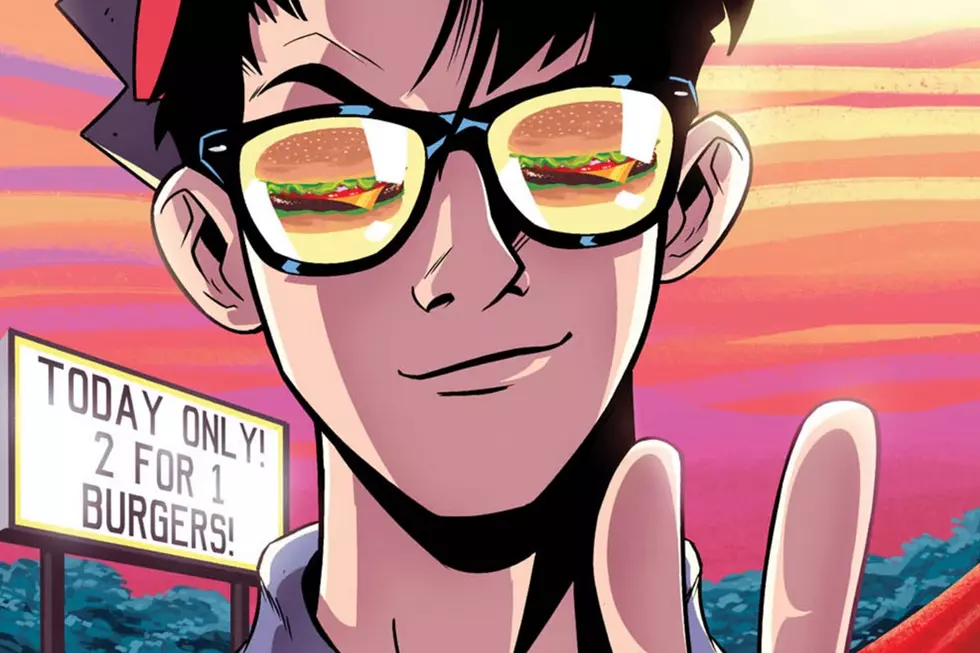
From Samurai to Shooting Hoops: Takehiko Inoue, Art Chameleon

It's one of the oldest tricks in the hustler's handbook. Find yourself a mark, pretend like you aren't all that, convince him to put some money up, and then use your true skills to earn some fast cash. In the manga series "Real," Kiyoharu Togawa and Tomomi Nomiya take to the basketball courts in parks and gyms, running game on unsuspecting suckers. The twist -- because you know there had to be a twist -- is that Togawa is confined to a wheelchair after a devastating bout with cancer.
But if basketball doesn't tickle your fancy, maybe a bit of the manga series "Vagabond" will fit the bill. Perhaps you've heard of Musashi Miyamoto, author of "The Book of Five Rings" and legendary master swordsman? When you imagine the typical samurai slicing and dicing his way through a wall of enemies, leaving behind a bloody mess while wielding an impossibly clean sword, you're probably thinking of Musashi. But "Vagabond" has a twist, too. It's about Musashi growing as a swordsman. While he does his fair share of battling, the most important parts are what happens in-between. Musashi grows as a swordsman and a human being in "Vagabond," turning what could have been a gory fight-fest into a breathtakingly-paced and beautifully drawn manga epic.
Here's the third twist: both of these books are by Takehiko Inoue, a critically-acclaimed and enormously talented creator. In comics, we tend to get used to a creator working with similar settings or themes; we place them into comfort zones, whether or not these judgments are correct or not. While there are always exceptions, we know that if we purchase a Frank Miller comic, we're going to get a book about a hard hero with gritted teeth in a harder world. Greg Rucka seems to be fond of character-driven intrigue, particularly involving three-dimensional female leads. It's probably a little unfair, but it generally holds true -- Andy Diggle won't be writing "Night Nurse: Romance in the Burn Ward" after his run on "Daredevil" and I can't really see Grant Morrison doing a gritty, down to earth take on The Spirit, you know?Creators often broke out of the cages we put them in, sometimes in spectacular ways, and Inoue is a perfect example, if not the best example. Twenty years ago, he helped jumpstart a basketball fad in Japan with "Slam Dunk," the story of a high school basketball team. In 1997, in collaboration with ESPN, he launched "Buzzer Beater," an online manga about an intergalactic basketball competition. Early judgments would say that sports manga was Inoue's comfort zone. He is clearly a sports fan, with a specific interest in basketball, right?
But hen you look at Inoue's ongoing works, currently being serialized in the United States by Viz Media, you see that Inoue goes far beyond being just a "sports guy." "Real" is about wheelchair basketball, dealing with disabilities, and overcoming any and all adversity. The cast is full of high school-age people who find brotherhood, and arch rivals, through basketball. Basketball also serves as a coping mechanism, allowing them to come to terms with and eventually overcome their inner demons. A haughty, arrogant high schooler with a heart of ice suddenly finds himself ejected from the top of the world and confined to a hospital bed. His denials and sheer mental anguish speak volumes and come across as wholly believable. And then along comes "Vagabond" and he's even harder to box in.

"Vagabond" is Inoue's take on Musashi, based on the novel "Musashi" by Eiji Yoshikawa. It's fictionalized, which generally tends to mean "jazzed up and more violent than it actually is." "Vagabond" definitely delivers on the violence, and portrays Musashi with all the swagger of a Sengoku-era Muhammad Ali, but Inoue does one thing that keeps it from being just another bloody fairy tale: he treats Musashi's challengers as genuinely challenging. When Musashi finally finds a man that he wants to kill to advance in his reputation, he finds himself unable to do it. The man is old and asleep in his bed, blind to the danger hovering just above his head, but his presence is enough to bring Musashi to tears; he realizes that he may be able to kill almost everyone he's ever met, but he is nothing when compared to a true swordsman.
There are two aspects to Inoue's work that make him so great at what he does. Characters without characterization are paper dolls, flat and boring and simply there to push the story along, but Inoue elevates characterization above all other traits, which often building up expectations for an eruption of violence, but then delivering a heartbreakingly brutal moment of character depth instead.
The other aspect, and the easiest to recognize, is that from a purely artistic standpoint, Inoue is a powerhouse. The easiest comparison for American readers is Stuart Immonen, whose stylings on "Nextwave," "Superman: Secret Identity," and "Ultimate Spider-Man" show a remarkable level of skill and willingness to switch up art styles as a project requires.
Inoue does the same thing, especially in "Vagabond." While he usually approaches the series with a heavily-detailed style that should be familiar to American comics fans, he occasionally dips into his bag of tricks to switch things up when the situation requires it. Shocking realizations are conveyed by Inoue ramping up the detail, drawing tears as they appear in real life rather than simply rivers running down someone's face, and carefully penciling in pure anguish. Particularly beautiful scenes get the watercolor treatment, and still other scenes are just hints of motion and emotion, with faces rendered via thick and messy brush strokes. If you want artistic variety, "Vagabond" is an amazing place to start.
Inoue is really the total package. His characters behave and hurt like real people, his swordsmen split their time between cutting heads off and recognizing their own weaknesses, and it all ends up being incredibly entertaining, and sometimes even powerful. Dipping your toe into Inoue's work is a safe decision to make, especially considering the diversity of his characters, subject matter, and art. You won't regret giving him a look, and the seventh volume of Vagabond in the oversized, 3-in-1 Vizbig format just hit shelves, if you're looking for a place to start.

More From ComicsAlliance









